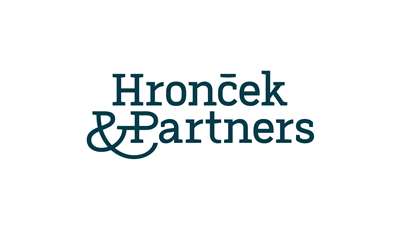Informing potential public sector partners about the facts and their legal rights and obligations that need to be considered when identifying the ownership structure of a public sector partner, and in particular clarifying what is meant by the term “ownership structure of a public sector partner” (content and scope), have proven to be important parts of the entire registration process during our several years of experience in the field of public sector partner registration. In addition to the above information, the article also emphasizes that the actions of an authorized person with professional care in disclosing the ownership structure of a public sector partner are not an end in themselves.

Pursuant to Act No. 315/2016 on the Register of Public Sector Partners and on Amendments to Certain Acts (hereinafter also referred to as the “RPVS Act”) and pursuant to Act No. 297/2008 Coll. on the prevention of money laundering and terrorist financing and amending certain acts (hereinafter also referred to as the “AML Act”), an authorized person in the process of identifying the ultimate beneficiary of a public sector partner is required (among other things) to disclose the ownership structure of the public sector partner and to state it in the verification document of the public sector partner.
The disclosure of the ownership structure of a public sector partner by an authorized person with the cooperation of the public sector partner may seem like a simple task, but from the perspective of the public sector partner itself, it is a time-consuming and administratively demanding process within the overall process of identifying the beneficial owner.
The ownership structure of a public sector partner, or its disclosure or uncovering, can be simply defined as the identification of any and all legal or natural persons or other entities that have any qualifying participation in a public sector partner, including through the so-called chain of legal entities, up to the level of natural persons.
Pursuant to Section 5(3) of the RPVS Act, if the application for registration (including initial registration, registration of changes relating to data recorded about a public sector partner and its ultimate beneficiaries in the register of public sector partners) concerns an ultimate beneficiary, a verification document shall be attached to the application for registration. Similarly, pursuant to Section 5(6) of the RPVS Act, the authorized person is required to provide true and complete information in the application for registration and, if the application for registration concerns the ultimate beneficiary, to support it with a verification document.
Pursuant to Section 11(6)(b) of the RPVS Act, the identification of the ultimate beneficiary and the verification of the identification of the ultimate beneficiary shall be demonstrated by a verification document in which the authorized person shall state the ownership structure and management structure of the public sector partner (if it is a legal entity). The disclosure of the ownership structure in the verification document is therefore one of the essential requirements of the verification document.
Pursuant to Section 6(1)(e) of the RPVS Act, the registering authority shall verify, prior to registration, whether the verification document meets the requirements of Section 11(6) of the RPVS Act.
Subsequently, pursuant to Section 8(1) of the RPVS Act, if the application for registration does not meet the conditions set out in Sections 5 and 6 of the RPVS Act, the registering authority shall not make the registration. The registering authority shall notify the authorized person of this fact by means of a notice of refusal to make the registration.
It is clear from the above provisions of the RPVS Act that, after the submission of an application for registration of data in the register of public sector partners by an authorized person (both in the case of initial registration and in the case of registration of changes relating to data entered in the register of public sector partners and their end beneficiaries), the registering authority verifies whether the verification document meets the requirements of Section 11(6) of the RPVS Act and, therefore, whether it specifies the ownership and management structure of the public sector partner. If the verification document does not specify the ownership structure, or if the ownership structure is not specified or is not sufficiently disclosed, the registering authority shall not execute the registration proposal or shall reject such a proposal.
We would like to remind you that the disclosure of the ownership structure of a public sector partner is a process within the identification of the ultimate beneficial owner, the result of which should be the identification of natural persons who are the ultimate beneficial owners of a public sector partner. Which natural person is considered the ultimate beneficial owner is defined in Section 6a of the AML Act. Since the purpose of this article is not to provide a detailed explanation of the defining characteristics of beneficial owners and, therefore, of the circumstances in which a natural person is considered a beneficial owner under the AML Act, a brief premise (not including all circumstances that establish the status of beneficial owner for the natural persons concerned) that the beneficial owner of a legal entity is (among other things) a natural person who has a share in the registered capital, voting rights and economic benefits (profits) of the legal entity equal to or greater than 25%.
In practice, there were often cases where authorized persons and public sector partners focused on revealing the ownership structure and, within its entities (legal entities), down to the level of natural persons who held this share or had an influence on this share (e.g., through an indirect share). In the case of entities (legal entities) with a share of less than 25% of the share capital, voting rights and economic benefits of a public sector partner or in the case of owners of minority shares (e.g. up to 5%), there was a tendency not to further disclose their ownership structure in the verification document, as it is not the purpose of disclosing their ownership structure to influence the identification of the ultimate beneficiary, which is not even possible in such a case. In practice, it also often happened, especially with foreign partners in the public sector, that the provision of legal cooperation by a public sector partner in disclosing the ownership structure was rejected due to a higher administrative burden, on the grounds that no natural person within the minority owner (legal entity) meets the requirements for identification as the ultimate beneficiary, without any proof of this fact.
However, we do not consider this procedure to be correct and, in our legal opinion, the authorized person would not have acted with professional care within the meaning of the RPVS Act. This would also result in the registration authority rejecting the application for entry in the public sector partner register on the grounds that the authorized person did not disclose the ownership structure of all entities (including minority entities) or did not disclose it sufficiently. It is precisely in the ownership structure of minority legal entities that there may be a natural person whose direct share in the public sector partner does not reach the required 25% threshold, but together with an indirect share in a minority entity, this threshold will be reached by the sum of the direct and indirect shares, and will thus be identified as the ultimate beneficiary of the public sector partner.
This can be explained using a specific public sector partner as an example:
The public sector partner is a limited liability company XY. Its partners are the following natural and legal persons:
Natural person A 21% direct share in XY
Natural person B 24% direct share in XY
Legal entity C 50% direct share in XY
Legal entity D 5% direct share in XY
Legal entity C has the following ownership structure:
Natural person E 50% direct share in C and therefore 25% indirect share in XY
Natural person F 50% direct share in C and therefore 25% indirect share in XY
Legal entity D has the following ownership structure:
Natural person A 50% direct share in D and therefore 2.5% indirect share in XY based on the share in D
Natural person B 50% direct share in D and therefore 2.5% indirect share in XY based on the share in D
The following will be identified as the ultimate beneficiaries of XY:
Natural person B 26.5% direct and indirect share in XY (24% direct + 2.5% indirect share
Natural person E 25% indirect share in XY
Natural person F 25% indirect share in XY
If the ownership structure of the entity legal entity D had not been disclosed, it would not have been possible to identify natural person B as the ultimate beneficiary of the partner and the public sector, as it would not have been possible to determine that it meets the threshold of a 25% share in the registered capital, voting rights and economic benefits (profits) of the public sector partner through the sum of its direct and indirect shares. In the case of entity legal entity C, we are not talking about a direct minority share, and therefore disclosure of the ownership structure of legal entity C is necessary (the indirect share of natural persons E and F reaches the required 25% threshold).
If the public sector partner fails to cooperate in disclosing the ownership structure of minority entities (legal entities) to authorized persons for the purpose of identifying the ultimate beneficiary, there are significant risks not only for the authorized persons but also for the public sector partners, namely that:
- the registering authority will not execute or will reject the proposal to enter the data in the register of public sector partners;
- if an authorized person identifies the ultimate beneficial owner without disclosing and verifying the minority entities in its ownership structure, its actions could be considered as not complying with professional diligence within the meaning of the RPVS Act;
- the identification of the beneficial owner within the meaning of the AML Act would not have been carried out properly in accordance with the legislation;
- sanctions could be imposed under the RPVS Act.
